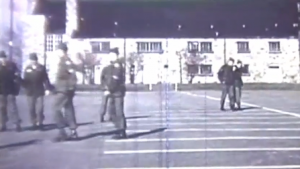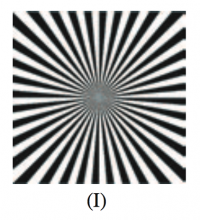
Rich Remsburg works as an archival image researcher on documentaries for PBS, National Geographic, the History Channel, museum exhibits and independent films. While working on a documentary on the history of biological warfare he came across a clip detailing US Army research in LSD and its effect on troops marching. Transcript:
US Army Chemical Corps
Edgewood Arsenal, Maryland
1958
These film records do not necessarily denote official Army doctrine. They cannot be obtained from the US Signal Corps.
A typical drill seargeant orders his men to fall in. The squad, composed of volunteers for the test, responded like well trained soldiers, immediately and without question. On the drill field the men obeyed his commands accurately and with precision. A second drill seargant assumed command. He put the squad through its paces capably. This man also proved to be an able drill seargant, giving precise commands.
Two hours later, the squad all except the [first] drill seargant are drugged with LSD and again were ordered to fall in. The response was not the same. The squad leader thought it was not necessary for him to dress right. There was much laughter as the group attempted to give expression to inner emotions. This elation was group supported, and an individual who was seperated from the group would show severe disturbance. Notice the volunteer who salutes several times. Five minutes later a severe depression [of the saluting volunteer] convince the medical officers to end his participation in this test.
Response and reaction to the [first] drill seargant who did not receive LSD were as before. But in marching, the drugged squad, although starting fairly well, gave a sluggish and ragged performance. After a few minutes, the men found it difficult to obey orders, and soon, the results were chaotic.
The second drill seargant, who had performed effectively earlier in the day, was now given command of the squad. He too had received LSD and he no longer was an effective leader. When an officer ordered the leader to drill the squad, he responded with “You want a drill? You drill ’em!”. Ordered to leave the field, he refused to go. In answer to a direct question, he said he was capable of drilling the men and was instructed to do so. Minutes later, it was evident that he was unable to carry out his orders, and he was escorted from the field.
We have seen some of the effects of LSD. What effect would it have on a vital operation? Further research is required to give us that answer.
[cut to a Nike Ajax missile battery readying for launch, typically placed around population centers and strategic locations such as long-range bomber bases, nuclear plants, and ICBM sites in the late 1950s]
A far better explanation for why LSD is currently Schedule I under the UN Convention on Psychotropic Substances than I have heard to date.



